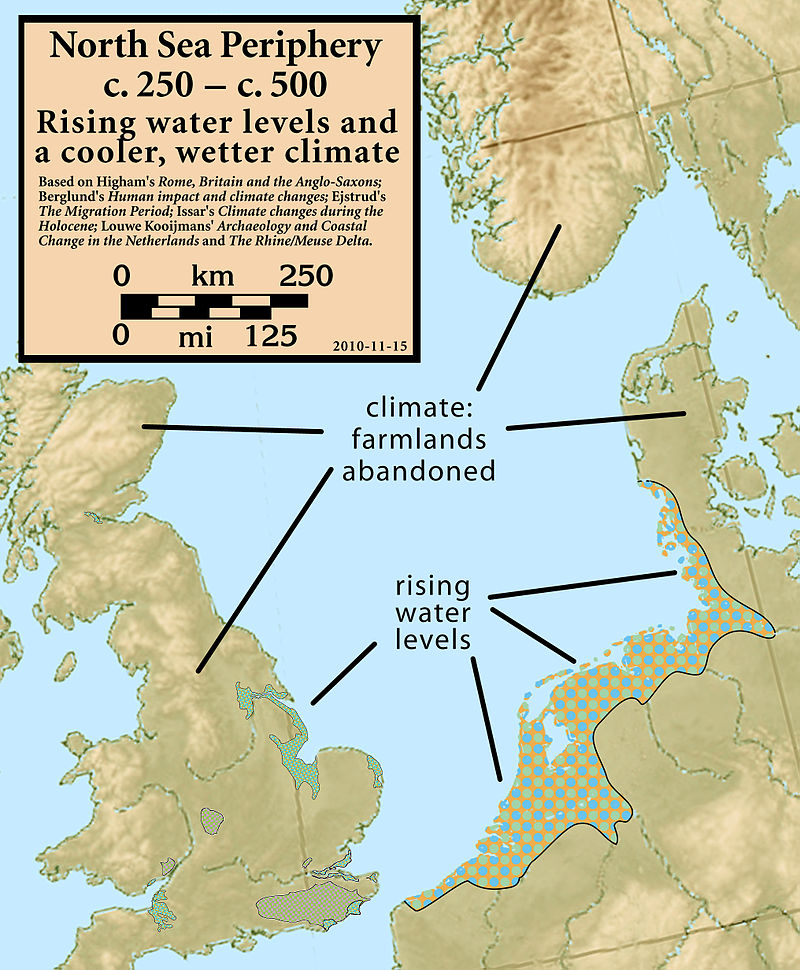Note: I'm taking "Danish people" to mean people that lived in Denmark.
they could have attacked what is now Germany, Poland, Belgium, Holland and even Lithuania and France, traveling near the coast, which is much safer. However, they invaded Scotland and England (which are much further away)
England was by no means "much" further away from France. The Strait of Dover is only 33.3km away from France at the closest. You can see Calais atop the White Cliffs, and vice versa. So even if it was appreciably more dangerous to sail across the North Sea, such a journey could be avoided by simply taking a short hop from France.
And in fact, the Anglo-Saxon settlement of Britain began in the Southeastern England. Eopwinesfleot , in Kent, is preserved in chronicles as the site where Hengist and Horsa first landed in Britain. More concretely, East Anglia is generally regarded to be the first to be settled by the Anglo-Saxons. Both locations are within easy distance from continental coast.
Scotland . . . Iceland, Greenland and even North America, with many risks.
Except for the Scottish Lowlands, all of these only occurred during the Viking Age. The settlement of Iceland only began in the mid-9th century, and Greenland and America even later than that.
While parts of Scotland fell under the control of the Anglo-Saxons, that was the result of the Northumbrians expanding northward, and thus has nothing to do with the perils of sea travel.
And why were they so isolated from the rest of Europe until the Viking age?
This is actually not true. Even in antiquity several Germanic tribes are thought to have moved out of Denmark into the rest of Europe. For example, the Teutones, the Cimbri, and the Ambrones were said to be neighbouring tribes from what is now Denmark. Their arrival in the territories of the Roman Republic sparked the Cimbrian War. It is probable that shorter distance migrations into Germany would've been more common in the same period.
Furthermore, during the late empire, several more tribes hailing from Denmark featured in the Migration Period. In addition to the Jutes and Angles, this includes the Burgundians who are thought to have originated in the Danish island of Bornholm, the Herules who may have been driven out of Denmark by the Danes. This is in addition to the tribes that inhabited Scania, which until the modern period were considered Denmark and were reckoned as such in the Viking Age, such as the Lombards.
Thus while the Jutes and the Angles were colonising Britain, their neighbours the Burgundians were settling in Eastern France and the Lombards were conquering Italy.
they ignored everything in between, that's what surprises me . . . rather than (say) Frisii or Belgium's Franks

One of the impetus behind the Angles migration is a deterioration of climate conditions during the late classical period. This led to severe floods of the Jutland Peninsula as well as the German North Seas coast - including the lands of the Saxons and the Frisii.
Hence, the reason the Angles (and Saxons) headed for England was as simple as that there was a relative abundance of land in England. The Roman withdrawal had also left it undefended, unlike France and Belgium where the Franks had settled.
